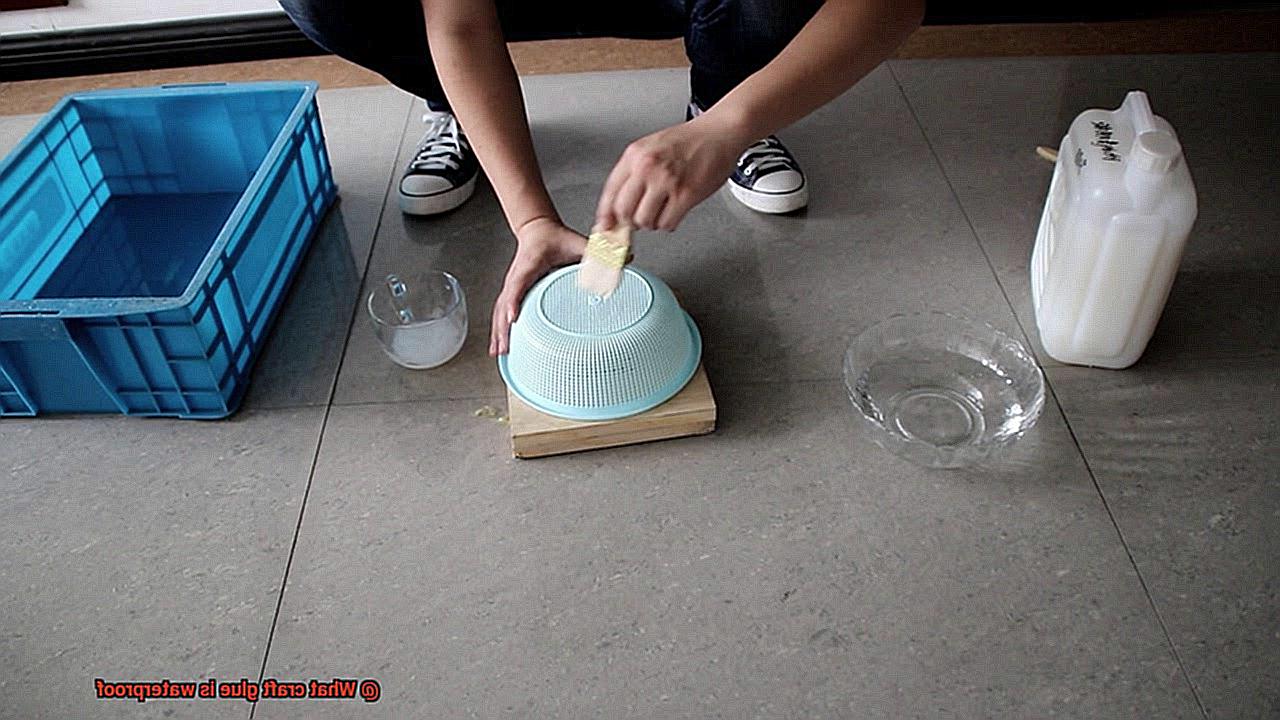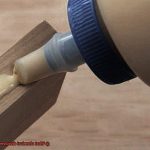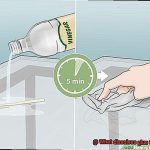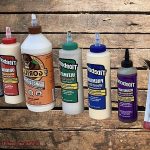Do you find crafting to be a therapeutic and creative way to spend your spare time? With endless possibilities of materials to work with, the only limit is your imagination. However, when it comes to crafting, one of the most important things for any project is the glue. And if you live in a rainy or humid environment, you’ve probably experienced the frustration of putting hours of hard work into a piece, only to have it fall apart because of water damage.
But don’t let that discourage you. There are some craft glues out there that are waterproof and can withstand any water exposure, from rain to high levels of humidity. Finding the right waterproof glue is essential for any crafter looking to create long-lasting pieces.
In this blog post, we’ll dive into the world of waterproof craft glue and explore the main types, such as epoxy, polyurethane, and PVA glues. We’ll also consider the best brands of craft glue that offer waterproof options and tips on how to use them effectively. Whether you’re a beginner or a pro, you’ll find everything you need to know about waterproof glue for crafting in this post.
So, get ready to say goodbye to water damage woes and hello to durable creations. Let’s dive in and discover which craft glues are up for the challenge.
Types of Waterproof Craft Glues
Contents
Crafting is all about bringing your creative vision to life, and having the right glue is essential to ensure your project stays together. If you’re working on something that may come into contact with water, you’ll need a waterproof craft glue. Luckily, there are several types of waterproof craft glues available, each with its unique properties and uses.
Epoxy-based glues are a go-to choice for many crafters due to their strength and durability. Made up of a resin and hardener, epoxy creates a strong, long-lasting bond that can withstand exposure to water, heat, and chemicals. This makes them perfect for jewelry making, woodworking, and other crafts that require a strong adhesive.
Silicone-based glues are highly versatile and can adhere to almost any surface, making them an excellent choice for various crafting projects. They are also waterproof and heat-resistant, which makes them ideal for outdoor or high-temperature applications. Whether you’re working on glass, metal, rubber, or fabric, silicone adhesive is up to the task.
Polyurethane-based adhesives are known for their excellent bonding strength and resistance to water and heat. However, they have a longer drying time compared to other types of glues. Consider using polyurethane-based glue when working on projects that require a strong bond but can withstand longer drying times.
For those looking for a more natural option, waterproof PVA glue is an excellent choice. PVA glue is a water-based adhesive that dries clear and remains flexible once dry. This makes it perfect for use on surfaces like paper, fabric, and wood.
Finally, cyanoacrylate glue, or super glue as it’s commonly known, can also be used as a waterproof craft glue. Superglue creates an incredibly strong bond that can withstand exposure to water and other harsh chemicals. It’s perfect for use on surfaces like metal, plastic, and ceramics.
Silicone-Based Glue
Enter silicone-based glue – the ultimate solution for all your waterproof crafting needs. As an expert in this field, I can attest that silicone-based glue is the go-to adhesive for crafters who need a strong and flexible bond that can withstand anything life throws their way.
One remarkable characteristic of silicone-based glue is its incredible flexibility. Unlike other adhesives that become brittle over time, silicone-based glue can handle temperature changes and still maintain its grip. This makes it a perfect choice for outdoor projects like birdhouses or garden decor that may be exposed to rain or snow.
Another major advantage of silicone-based glue is its superior water resistance. This type of glue is made from silicone polymers, which makes it versatile enough to be used on a variety of surfaces including glass, metal, plastic, and wood. It’s perfect for crafting projects that require a strong, waterproof bond.
But don’t just take my word for it – the strength and durability of silicone-based glue speak for themselves. It can hold heavy objects or materials securely in place, making it ideal for any project that requires a long-lasting hold.
Of course, it’s important to note that silicone-based glue may not be suitable for all types of surfaces. Always do a small test before applying the adhesive to the entire surface. And, please follow the manufacturer’s instructions carefully. It’s also important to wear gloves and work in a well-ventilated area when using this type of adhesive.
Epoxy-Based Glue
Look no further than epoxy-based glue, the superhero of waterproof adhesives.
This versatile adhesive is composed of two components – a resin and a hardener – that create an unbreakable bond once mixed together. Its strength and durability make it the perfect choice for any project that requires unbeatable water resistance.
Epoxy-based glue’s versatility allows it to be used on a variety of surfaces, including metal, glass, ceramics, and plastic. It’s commonly used in outdoor projects such as sealing and repairing boats, decks, and other watercraft. No matter the task at hand, epoxy-based glue is up to the challenge.
One of the key benefits of this adhesive is its resistance to chemicals, making it an excellent choice for projects involving harsh substances like gasoline or oil. When using epoxy-based glue, it’s important to follow the manufacturer’s instructions carefully and work quickly, as it tends to set rapidly once mixed.
Polyurethane-Based Adhesives
Polyurethane-based adhesives are a popular choice among crafters for their strong and durable bond. They withstand exposure to moisture and outdoor elements, making them an ideal option for projects that require unbeatable water resistance and long-lasting bonding.
One of the significant advantages of using polyurethane-based adhesives is their versatility. They can bond with a wide range of materials, including wood, metal, plastic, and even glass. This makes them an excellent choice for a variety of crafting projects.

When working with polyurethane-based adhesives, it’s crucial to follow the manufacturer’s instructions carefully. These adhesives typically come in two-part formulas that require mixing before use. Once mixed, the adhesive begins to cure and form a strong bond. However, keep in mind that these adhesives can be messy and difficult to clean up. To avoid any unintentional messes, it’s essential to protect your work surface and wear gloves when working with them.
Cyanoacrylate (Super Glue) Adhesives
Look no further than cyanoacrylate adhesives, also known as super glue. This adhesive is a top choice for many crafters due to its quick-drying and robust bonding properties.
One of the most significant advantages of super glue is its ability to withstand exposure to water without losing its adhesive qualities. Whether you’re bonding plastic, metal, or rubber, this adhesive will hold up. But that’s not all – it can also bond wood, ceramics, and leather, making it an incredibly versatile option for your crafting needs.
Another advantage of super glue is that it dries clear and leaves no visible residue. Plus, it has an extended shelf life, so you can keep it on hand for future projects without worrying about it deteriorating.
But before you start bonding away, be sure to follow the manufacturer’s instructions carefully. Apply the glue sparingly and allow it to dry completely before applying any pressure to the materials. And whatever you do, don’t get it on your skin – it can cause injury by bonding skin together.
Advantages and Disadvantages of Each Type of Waterproof Craft Glue
There’s a solution: waterproof craft glue. But with so many options available, how do you choose the right one for your project? Let’s take a closer look at the advantages and disadvantages of each type of waterproof craft glue.
First up, epoxy glue. This glue is known for its incredible bonding strength and ability to resist water, making it perfect for outdoor projects or items that will be in contact with water. However, it requires mixing two separate components together in equal parts and has a short working time before it sets, making it a bit tricky to work with.
Next is polyurethane glue. Like epoxy, this glue is also waterproof and forms a flexible bond that can withstand movement and vibrations. Unlike epoxy, it has a longer working time, but can be messy to work with and requires careful application to avoid excess oozing out.
Silicone adhesive is another popular option for waterproofing your craft projects. It’s easy to apply and dries clear, making it ideal for projects where appearance is important. However, it may not be as strong as other types of waterproof glue and can take longer to dry.
Finally, there are waterproof craft glues specifically designed for certain materials such as wood or fabric. These types of glues may have additional advantages such as being able to stain or dye them to match the material they will be used on. However, they may have limitations when it comes to bonding different types of materials.
When choosing a waterproof craft glue, consider the specific needs of your project. While some types may have more advantages than others in certain situations, there isn’t a one-size-fits-all solution. It’s essential to understand the pros and cons of each type of waterproof craft glue, so you can make an informed decision on which one will work best for your project.
Tips for Choosing the Right Waterproof Craft Glue for Your Project
Crafting is a fun and rewarding way to spend your time, but it’s important to choose the right tools to ensure your project is a success. When it comes to waterproof craft glue, there are several factors to consider before making your purchase.
Material Compatibility
The first step in choosing the right waterproof craft glue is determining the type of material you’ll be working with. Different materials require different types of glue, so make sure to choose an adhesive that is compatible with your specific material.
Level of Waterproofing
Depending on the project, you may require a completely waterproof glue or one that is slightly water-resistant. Determine the level of waterproofing needed for your project before making your selection.
Drying Time
Nothing is more frustrating than waiting for glue to dry before moving on to the next step of your project. Consider the drying time of the glue and choose one that suits your needs.
Strength of Bond
If your project will be exposed to wear and tear or stress, you’ll need a strong adhesive that can withstand these challenges. Look for a waterproof glue that is known for its strength and durability.
Safety Concerns
Finally, consider any safety concerns related to the glue you choose. Some waterproof glues may contain harmful chemicals or emit strong odors, so it’s important to choose a product that is safe for you and your workspace.
How to Use Waterproof Craft Glues Effectively
Look no further than waterproof craft glues. However, using these specialized adhesives effectively requires careful consideration and technique. Here are five sub-sections to guide you on how to use waterproof craft glues effectively.
Choosing the Right Glue
The first step in using waterproof craft glues effectively is selecting the appropriate glue for your project. Not all waterproof glues are created equal, and some may work better for certain materials or applications than others.

Consider factors such as flexibility, heat resistance, and durability when making your selection. For example, if you’re working with materials that require high flexibility or heat resistance, a silicone-based glue may be the best choice.
On the other hand, if you need a strong and durable bond that can withstand exposure to water, heat, and chemicals, an epoxy-based glue may be a better option.
Following Manufacturer’s Instructions
Next, it’s important to read and follow the manufacturer’s instructions carefully. This will give you important information on how to use the glue effectively, such as the recommended drying time and any safety precautions that need to be taken. Failing to follow the instructions can result in a weak bond or even damage to your materials.
Preparing the Surface
Before applying waterproof craft glue, it’s important to clean and dry the surfaces that will be bonded together. Any dirt, dust, or debris can interfere with the bonding process and weaken the strength of the bond. Proper surface preparation will help ensure that the glue adheres properly and creates a strong hold.
Applying and Setting the Glue
When applying waterproof craft glue, less is often more. It’s important to use the glue sparingly and evenly to avoid creating a mess or potentially weakening the bond. Additionally, it’s important to apply pressure to the surfaces being bonded together for a period of time after applying the glue. This will help to ensure that the bond sets properly and creates a strong hold. Don’t rush this step – allowing sufficient time for the glue to dry or cure is crucial for creating a durable bond.
Reinforcing the Bond
In some cases, it may be necessary to reinforce the bond of your waterproof craft glue. This is especially important if you’re working on a high-stress application or bonding heavy objects together. You can reinforce the bond with additional support or hardware to ensure that the bond remains strong and secure over time. It’s important to consider the specific conditions your project will be exposed to and take any necessary additional measures to reinforce the bond.
Common Mistakes to Avoid When Using Waterproof Craft Glues
Here are some common mistakes to avoid when using waterproof craft glue.
Firstly, not preparing the surface properly is a common mistake. Cleaning and drying the surfaces before applying the glue is essential to ensure a strong bond. Any dirt, dust, or moisture on the surface can weaken the bond and cause the glue to fail. So grab a clean cloth or paper towel and wipe away any debris or moisture.
Applying too much glue is another mistake that can create a mess and weaken the bond. While more glue may seem like it would provide a stronger bond, it can actually do more harm than good. To avoid this issue, use only a small amount of glue and spread it evenly over the surface.
Allowing enough time for the glue to dry is crucial for a strong bond. Waterproof craft glues often require longer drying times than regular craft glues. Rushing the drying process can lead to a weak bond that won’t hold up over time. So be patient and read the instructions carefully before handling or using the item.
Last but not least, choosing the right type of waterproof craft glue for your project is crucial. Not all waterproof craft glues are created equal, so it’s important to pick a glue that will work well with both the materials you are using and the conditions in which they will be used.
-bwjyPhEACk” >
Also Read: Is Elmer’s Glue Waterproof?
Conclusion
In conclusion, crafting is a wonderful way to express your creativity and de-stress after a long day. However, nothing can be more frustrating than seeing your hard work ruined by water damage. This is where waterproof craft glue comes into play. Luckily, there are several types of waterproof craft glues available in the market to choose from.
You can opt for epoxy-based, silicone-based, polyurethane-based, PVA glue or cyanoacrylate (super glue) adhesives depending on your project’s unique requirements. But before you make a choice, consider factors such as material compatibility, level of waterproofing needed, drying time and strength of bond required.
It is important to follow the manufacturer’s instructions carefully while using any type of waterproof craft glue. Additionally, proper surface preparation is crucial to ensure that the adhesive bonds securely and lasts longer. Avoid common mistakes like applying too much glue or rushing the drying process.
By choosing the right type of waterproof craft glue and following some simple tips and tricks for effective usage, you can create beautiful pieces that will withstand exposure to water and other harsh elements.






